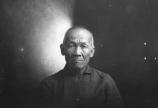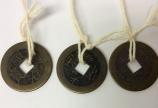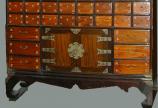New online inventory for Chinese Canadian artifacts in BC
Humanities, Continuing Studies

The University of Victoria is taking a lead role this year in the Chinese Canadian Artifacts Project (CCAP) to establish an online inventory of Chinese Canadian artifacts held by local museums.
According to recent provincial government statistics, British Columbia is the most ethnically diverse province in Canada and welcomes nearly 40,000 new immigrants every year. More than 200 years ago, Chinese workers landed in Nuu-chah-nulth territory in 1788 as part of an expedition to establish a permanent, non-Indigenous settlement. Just over a century later, Cumberland on Vancouver Island was already the home of one of Canada’s largest Chinese communities.
Now UVic, in association with the BC Museums Association and in partnership with the Cumberland Museum and Archives and Nanaimo Museum, is compiling a publicly accessible database (to be launched this winter) of Chinese Canadian artifacts held by museums in BC for use by libraries and museums in Canada and elsewhere.
Read the BC government release and UVic backgrounder (April 30)
CCAP Principal Investigator Dr. John Price and CCAP Research Director Dr. Zhongping Chen, both from the UVic Department of History, are leading the 10-month project in association with CCAP Program Coordinator Dr. Tusa Shea of the Cultural Resource Management Program (CRMP) at UVic. The CCAP is currently soliciting expressions of interest from local and regional museums and archives with Chinese Canadian holdings.
Price recently described the funds for the project as “a sacred trust. They allow us to bring together curators and archivists from local and regional museums, UVic historians and cultural resource professionals, and experts in data management. Together we will make accessible to the public an incredible treasure chest of Chinese Canadian artifacts that highlight the historic role of Chinese throughout the province, their resilience in the face of systemic racism, and the strong, continuing ties that have been established with China.”
Chen added, “This project will highlight the many historical treasures that Chinese Canadians brought to and contributed to the province over the past 150 years. Scattered in dozens of smaller towns and cities, they will now be accessible to all British Columbians and become our province’s common heritage. Hopefully more people will donate their precious heirlooms to local museums.”
The CCAP was initiated in February and March this year. A workshop in June for participating museums will focus on the history, as well as on technical dimensions of database creation. Throughout the project, the team will continue to liaise with museums, provide museum training support and supervise student involvement from the CRMP.
“Although the end goal of this project is to develop a publicly accessible database of Chinese Canadian artifacts,” Shea added, “it also provides our program with an opportunity to support local museums in their efforts to engage with diverse communities, to share knowledge through workshops and conferences and to provide educational opportunities for students to work with museum collections.”
The Humanities Computing and Media Centre at UVic has also been involved, specifically in the development of a pilot database upon which the new inventory is being modelled.
The CCAP is supported by a provincial grant from the BC Ministry of International Trade, Asia Pacific Strategy and Multiculturalism, as part of the Chinese Historical Legacy Initiative announced last year.
Read the Chinese Historical Wrongs Consultation Final Report and Recommendations (PDF)
To participate in the CCAP or for further information, please contact: ccap@uvic.ca.



